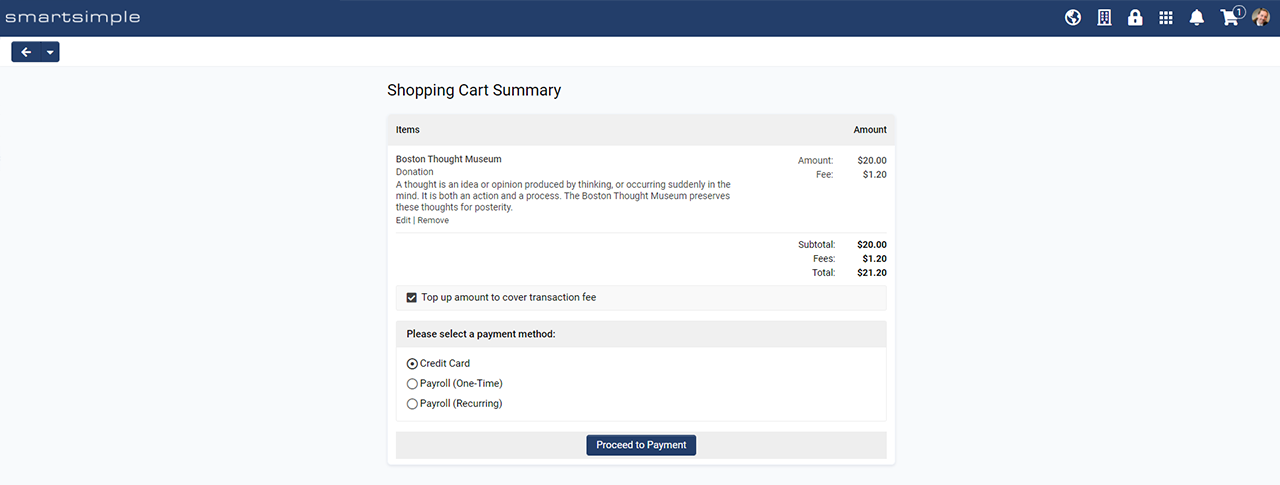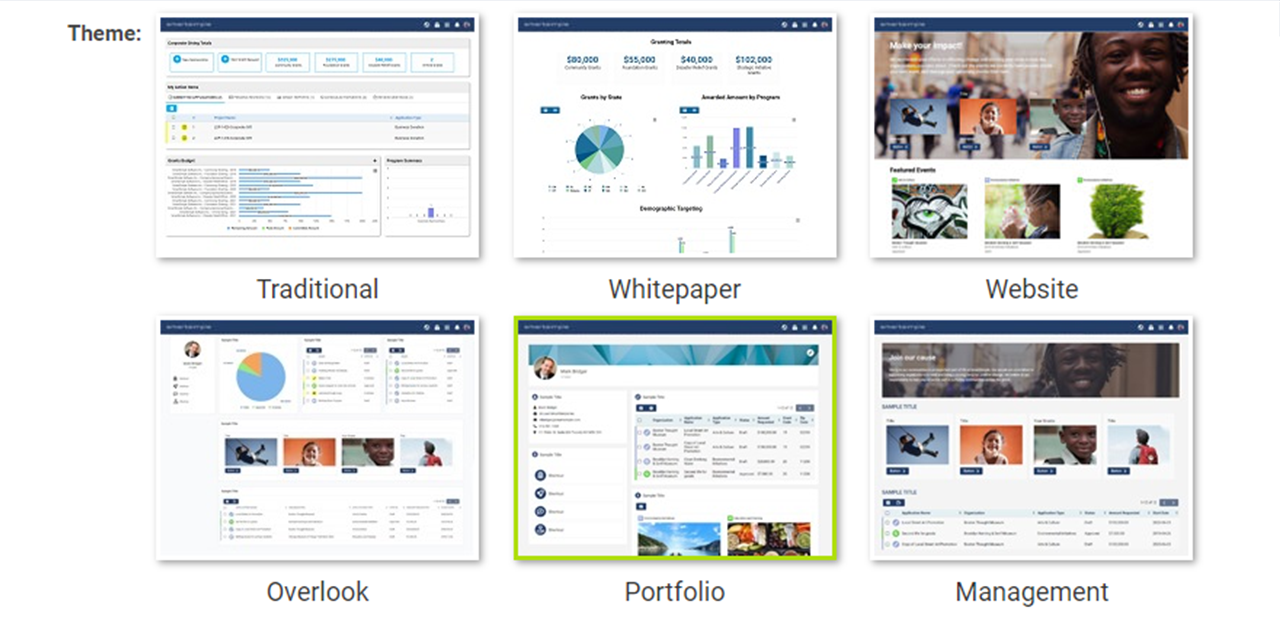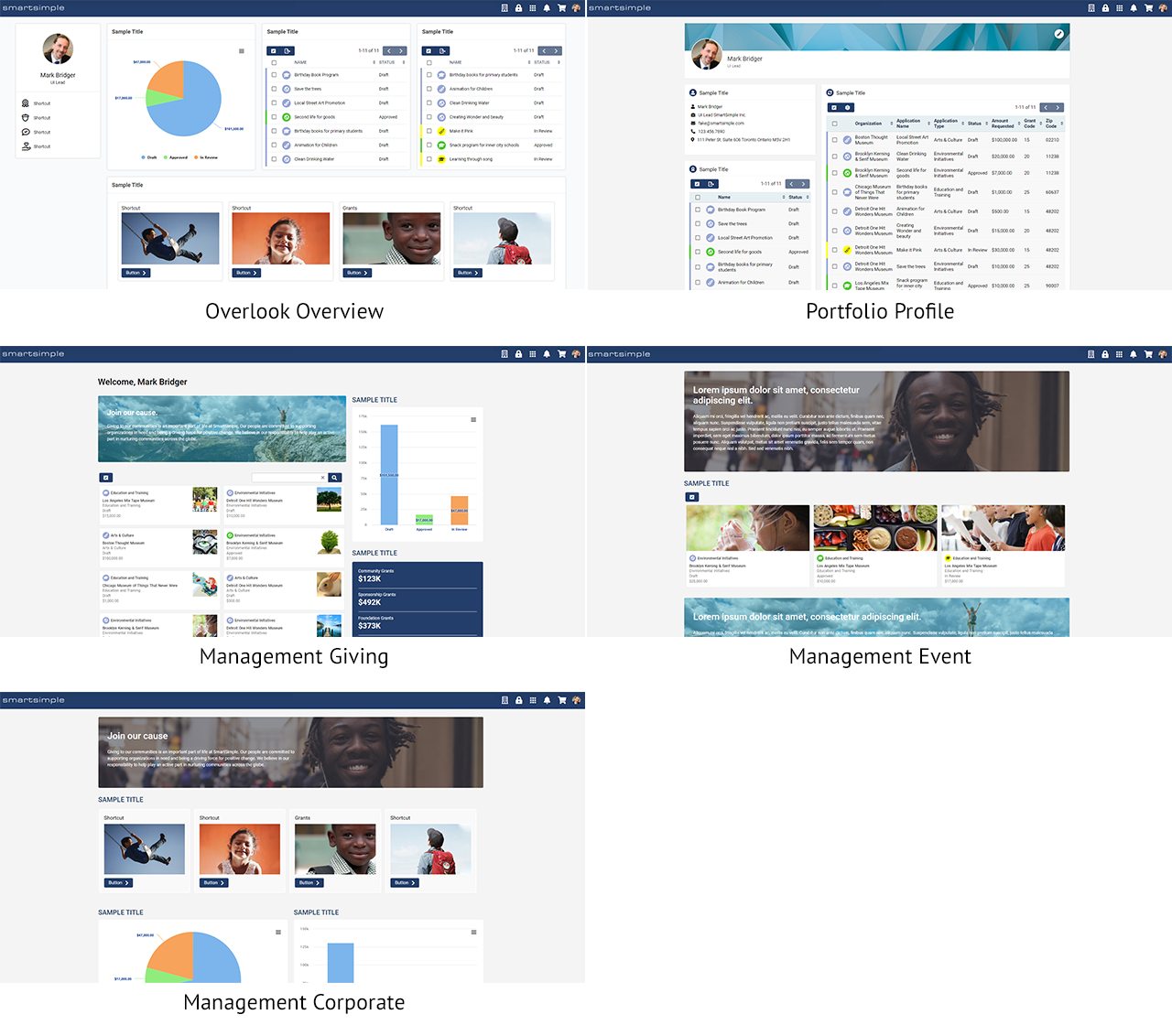Template:July2021Upgrade
General Details
Upgrade Dates
Public Cloud Production release date: July 8 2021
Public Cloud Backup release date: ???
Private Cloud Production (Managed Upgrades) release date: ???
Private Cloud Backup (Managed Upgrades) release date: ???
Overview
Watch this video to get a general overview of the new features in this release.
To watch this video in full screen, please click on the full screen button on the bottom right.
Global System Upgrades
The new features listed below are enhancements to the SmartSimple system and will be immediately available to SmartSimple users upon the application of the upgrade to their server:
Major Updates
Updated the Address Field to use the Google Location API for Auto-Population of Standard Fields
Typing into the address standard field will now provide the user with a list of verified address options. Upon selecting a verified address option, the other address standard fields (like country) will be auto-populated, saving the user time and helping to ensure addresses entered are accurate. This ability is available on signup pages, as well as user and organization profiles.
Minor Updates
Updated Chart-type Portal Sections with Ability to Open Records
Updated chart-type sections within a portal to allow you to drill down, and open up individual records. This will now function similar to the table-type sections allowing you to navigate to and open individual records for review.
On-Demand System Upgrades
The following features are available immediately with the application of the upgrade, but must first be enabled or configured by a Global Administrator:
Major Updates
New Shopping Cart Feature
New Shopping Cart feature allows for the tracking as well as processing of payments from users. When this feature is configured, it will allow users to process payments towards organizations, or UTA Level 1 records. This feature was designed with end user donation purposes in mind and will allow you to process payments directly via our integration with our partner Stripe, or through an integration with your own financial system by way of payroll deduction. Users may choose from one-time payments to multiple payment plans. For system administrators, this feature can be enabled in the Global Settings area through settings called Shopping Cart. You can define what system objects are available to for inclusion within an order, and multiple payment forms as well to specify different attributes for different methods of payment. For example, you can include a flat processing fee, and either choose to display or hide this from the user's order summary screen. For end users, when they navigate the records made available for payment towards, they will be presented an option to add to their shopping cart, from which they may check out when done.
Added Additional Themes and Templates Available to Portal Configuration
Added additional themes and templates available for use in portal configurations. Three new themes are now available. Five new templates have been added for use within these new themes. These templates allow you to setup well-designed tailored portals in a snap for specific audiences and focus areas.
New Integration with ORCID Research Database
New integration with ORCID research and funding database. This allows you to integrate your SmartSimple platform with ORCID in order for users to pull down their ORCID profile into your SmartSimple platform, and also to push out funding data from the platform out to ORCID. Your organization will need to sign up for an API or integration key directly with ORCID, to be entered as an Integration Key in the platform. Additionally, individual users will need to each authenticate their user profile with ORCID and authorize the platform to access ORCID data in order to pull down or update their ORCID profile within the platform.
New Ability to Generate Fillable PDF Forms for E-signature
Added new ability to configure Web Page View custom fields with custom content that will include fillable forms on a system-generated PDF sent through an e-signature provider. Currently, this feature is only available for integrations with DocuSign.
New Custom Field Type Special - Like Button Rating
New custom field type called Special - Like Button Rating can be used to present a thumbs up and down rating. You can set the permissions and availability for this field just like any, and present your users with the ability to like or dislike a record.
Updated Disbursement Creator Tool Now Available to Non-Admin Users
Updated Disbursement Creator tool to be available for non-admin users. This feature may now be enabled for use by non-admin users via a role permission located in the allocation mapping settings. Enabling this for users will then display the Disbursement option within the Tools menu within a UTA Level 1 record.
New Ability to Restrict Available Consumer Records for Provider Connection Based on Consumer Type and Status
New ability to restrict the type and status of Consumer records that you can choose from the Provider UTA. Within the configuration of Consumer connection within the Provider UTA connectivity settings, you can now more granularly control the availability of which Provider records can be linked with which Consumer records by type and status combinations of both Provider and Consumer.
New Import Templates Now Available to Non-Admin Users
New Import Templates to allow you to configure import wizards for use by non-admin users. This functionality is available for use with UTA Level 1, Level 2, and Level 3 type records. The configuration setting for this can be found within the UTA settings page -> respective level tab -> Import Templates. These templates allow you to create an import profile restricted to specific record types, statuses, and also the fields to import into. You may then permission the templates for use by user role. We've also extended the import wizard functionality to be available now for UTA Level 2, and Level 3 records as well. The interface and behaviour of the import wizard will now allow you to directly copy and paste content for upload in addition to file upload, as well as allow you to specify more options for column delimiter where only comma delimiters were accepted previously. The error detection and data validation has also been improved and will now alert you on any issues encountered at the end of the import. Lastly, you will be able to save your column mapping selection and reload these the next time you use the Import Template for a quicker import experience.
Minor Updates
Extended Bulk File Download Function for use With Consumer Provider List Views
Extended bulk file download functionality to be available for Consumer Provider list views. You may now configure Consumer Provider list views with the ability to download file uploads from the records returned in the list.
Added Options for Invitation-type Workflow Task to Create or Send Invitations
Added two new options for the Invitation-type Workflow Task to allow you create or send Draft Invitations. You can now trigger the creation and sending of contact invitations via Workflow Task, and additionally if the Workflow is triggered on a UTA Level 2 record, you will also have the ability to trigger a Level 2 activity Workflow Task that will create or send invitations off the parent Level 1 record.
Enhanced Hashtag-enabled Text-type Fields with Additional Options
Enhanced the Hashtag option for text-type custom fields with some additional options for improved usability. Introduced an option to restrict the ability to create new hashtag values to certain user roles. Introduced an option to categorize multiple fields into similar categories, such that end users entering in any of these fields will be able to search from the collective hashtags across all fields within the same category. Also introduced a new admin page, Hashtag Library, found in the Global Settings that will show you the list of available hashtags, and that also allows you to change the hashtag value and category.
Added Support for JSON Format for Report Exports
Added support for exporting report resultsin JSON format through the File Export feature of reports. Within the File Export configuration menu of a report, you can now specify an export format of JSON.
Beta Previews
No features are available for beta preview this upgrade.
Notes for Admins
Added New Parameters to SmartConnect API for Pagination of Records
Added additional parameters to the SmartConnect API to allow for pagination of record sets. For List action API calls, new parameters recordcount, recordstart, and recordend will now be returned to you. New parameters recordsperpage, recordstart, and pageofrecord will be available for you to pass to the calls to page through the result set. You may pass just the recordstart to indicate which record to start from, for example, given a recordsperpage 100, you could pass recordstart 1, 101, and 201 in order to obtain records 1-100, 101-200, 201-300 respectively. Another example, given a recordsperpage 100, you could pass recordstart 1, 1, and 1, in combination with pageofrecord 1, 2, and 3 in order to obtain the same record sets 1-100, 101-200, 201-300 respectively.
Added New Criteria Operators to SmartConnect API for Searching of Empty or Non-empty Values
Added additional operator available to the SmartConnect API for use within criteria to search for records where a field is empty or not. You may now include an operator of isempty, with a corresponding value of either true or false, within a criteria in order to search for records based on either empty or non-empty value.
Added New Attributes to SmartConnect API to Describe Sub-type of Custom Field Metadata
Added additional attribute fieldsubtypeid to the SmartConnect API function for Get Meta. This will allow you to retrieve the subcategory of a custom field. Where you were able to previously retrieve the field type, e.g. Text Box - Single Line, you can now retrieve the subcategory, e.g. Text Box - Date, or Text Box - Number for more granularity. You will be able to retrieve both the type name as well as internal type ID assigned to these types and subtypes.
Updated Default Settings for New Instances
Updated the default settings for any newly created instance to enforce stronger and recommended settings. Some of these default settings involve security settings, such as deprecation of plain text passwords in email reset template, and enforcement of SmartCheck server-side validation, Organization and User Security matrix, CAPTCHA validation, and cookie usage acceptance message. Some of these default settings involve interface settings, such as disabling of Classic-type interface options, enabling of compact header, and title bar navigation pane. Some of these default settings involve enforcement of configuration standards such as restriction of special characters and spaces in field names, and deprecated support for some variable syntax including reportproperty variable syntax in custom field options, as well as list variable syntax within group functions in template formulas.




